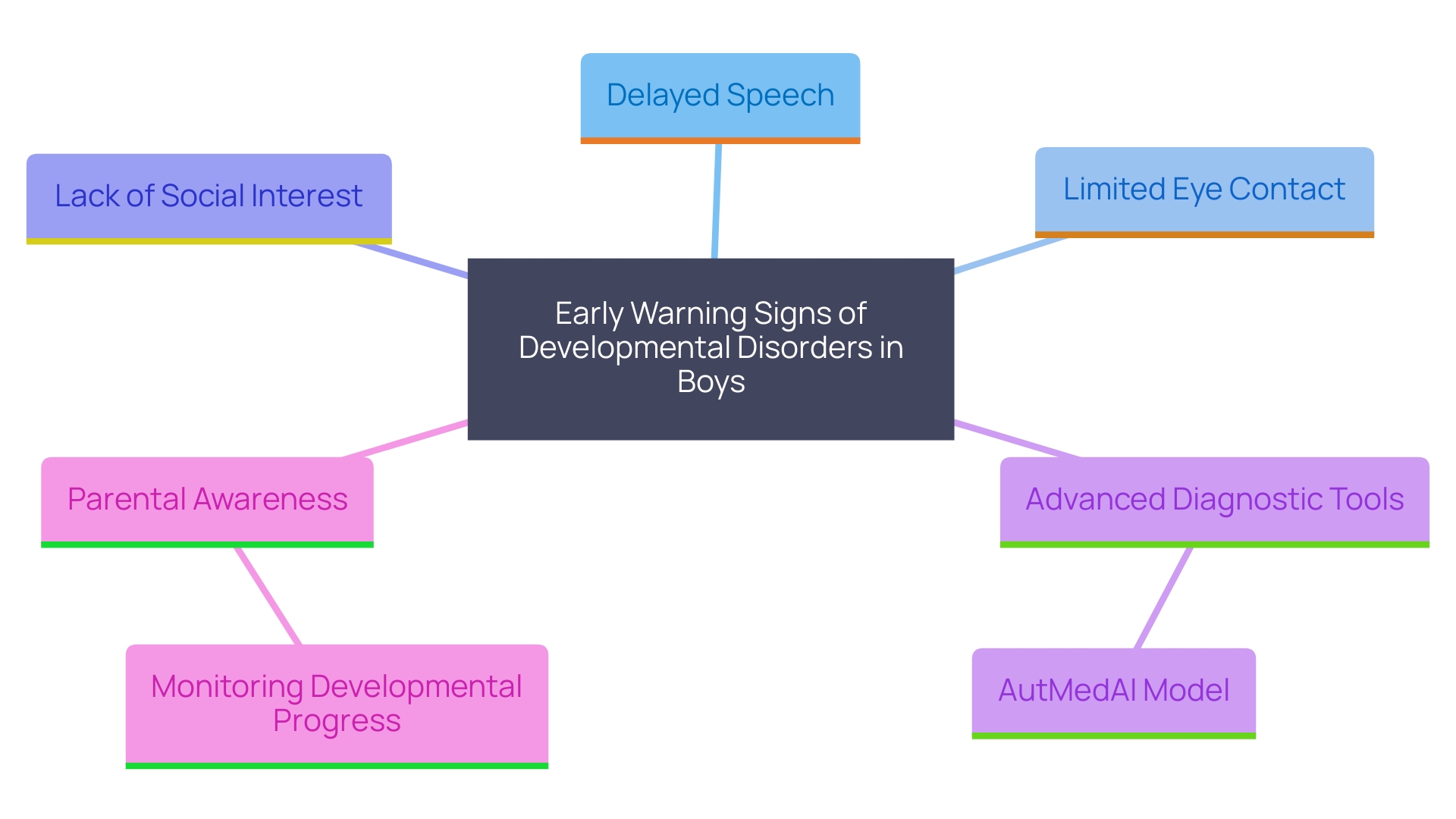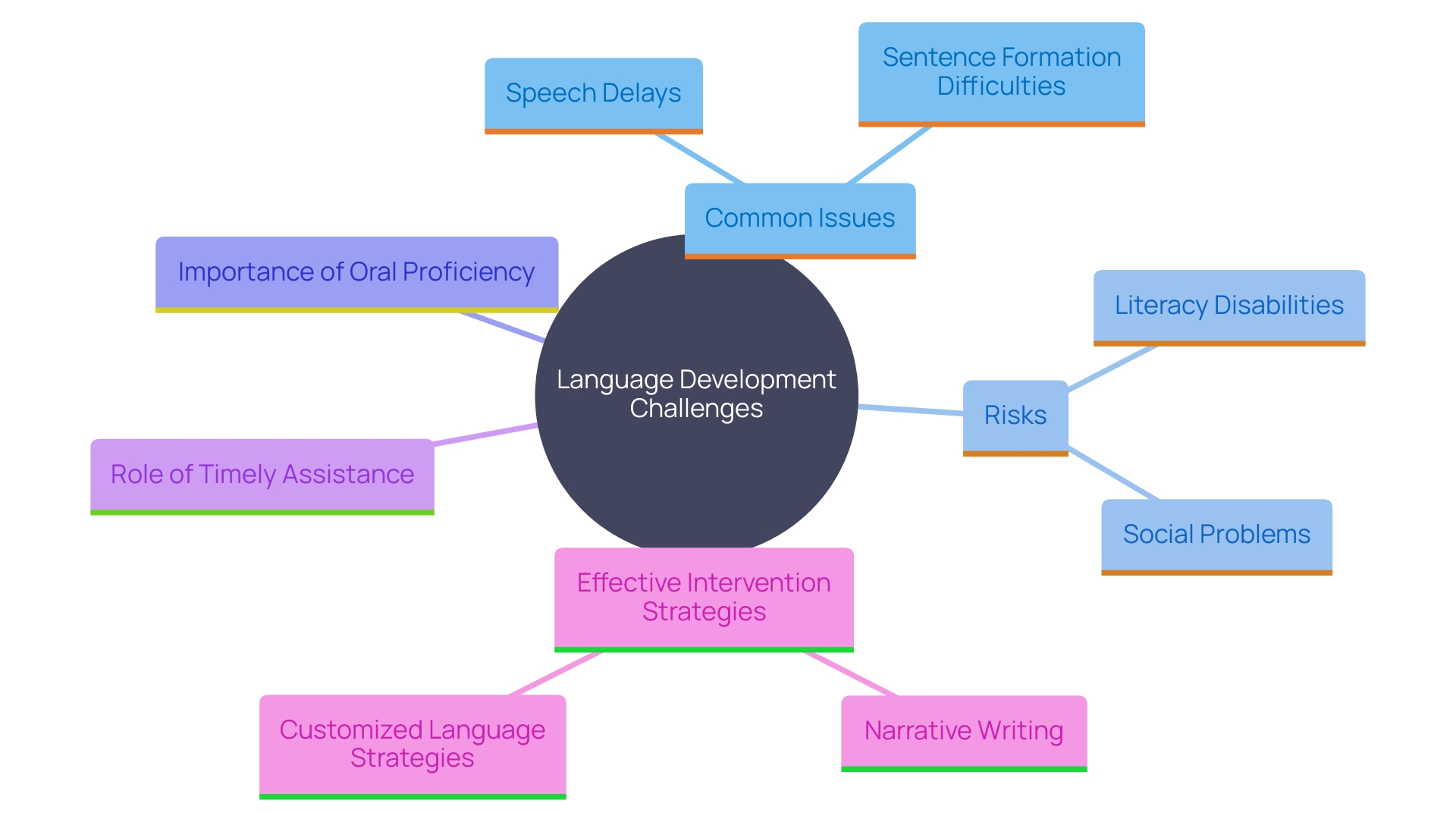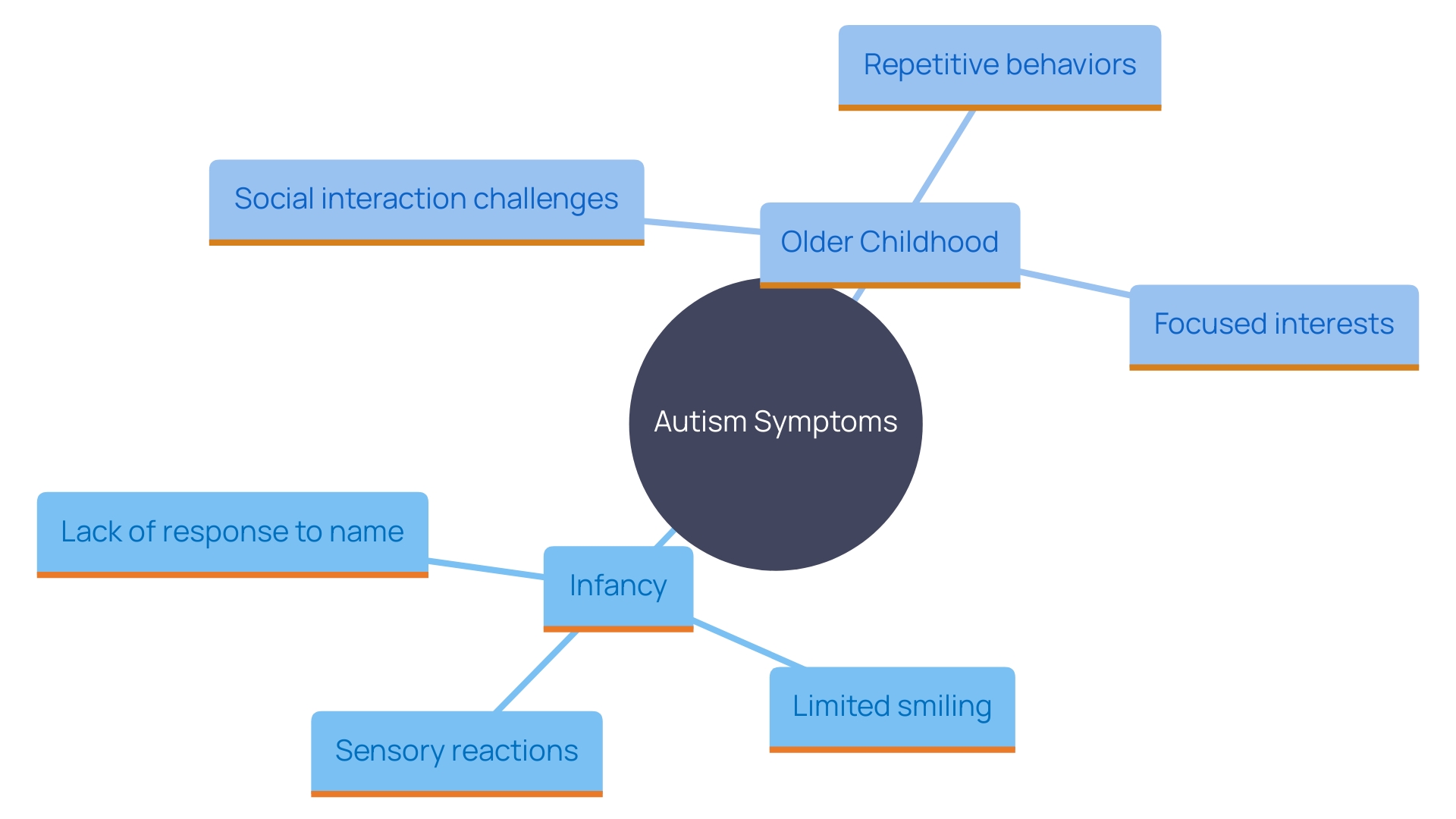Introduction
Understanding and identifying the early warning signs of autism in boys is a critical step toward ensuring timely and effective interventions. This article delves into the essential indicators of autism, such as delayed speech, limited eye contact, and repetitive behaviors, and highlights the importance of modern diagnostic tools like the 'AutMedAI' model. It also explores the unique social communication challenges faced by boys with autism, the significance of recognizing restricted and repetitive patterns of behavior, and the impact of language development concerns.
Furthermore, the article discusses age-specific symptoms from infancy to adolescence, stressing the importance of early identification and intervention. Finally, guidance is provided on when to seek professional help, underscoring the need for tailored support to promote the well-being and inclusion of boys on the autism spectrum.
Early Warning Signs of Autism in Boys
Identifying the early warning signs of developmental disorders in boys is crucial for timely intervention. These signs may include delayed speech and language skills, limited eye contact, and a lack of interest in social interactions. Early identification is supported by advanced diagnostic tools. For instance, the 'AutMedAI' model, developed using a large US database, has achieved an 80% accuracy rate in identifying autism in individuals under two years old. This highlights the significance of monitoring a young person's behavior attentively and contrasting it with standard developmental benchmarks.
'According to Kristiina Tammimies, Associate Professor at the Department of Women’s and Children’s Health, Karolinska Institutet, 'With an accuracy of almost 80 percent for individuals under the age of two, we hope that this will be a valuable tool for healthcare.'' This reflects the growing importance of leveraging technology to support early diagnosis and intervention. Almost 3% of all young individuals in the United States are identified with the condition, highlighting the necessity for parents to remain watchful and knowledgeable about their offspring's developmental journey.

Social Communication and Interaction Symptoms
Boys with autism often display distinct social communication challenges, such as difficulty understanding social cues and limited engagement in back-and-forth conversations. These challenges can also include struggles with comprehending jokes or sarcasm. Observing a boy's interactions with peers and family can provide valuable insights into his social communication abilities. A study approach shift has revealed the importance of considering the individual's unique needs and the assets they bring to their communities. Engaging and well-supported participation in daily activities is crucial for their mental health and overall development. Dr. David (Dan) R. Offord emphasized that ensuring a fair environment for young individuals, including those with disabilities, is essential. Autistic individuals, particularly those with concurrent emotional and behavioral issues, encounter considerable dangers of being excluded from meaningful social engagement. It is essential for caregivers to have the necessary resources to support their offspring's healthy development and family well-being.
Restricted and Repetitive Patterns of Behavior
Restricted and repetitive behaviors are key indicators of autism spectrum disorder. Boys may display these behaviors through repetitive movements, a strong need for consistency in their routines, or a deep fascination with specific topics or objects. Prompt recognition of these patterns is essential for comprehending a young person's behavior and organizing the required assistance. Research from the Autism Community in Action (TACA) highlights the significance of identifying these behaviors early to choose effective therapies that address each individual's distinct requirements. Additionally, advancements in behavioral analysis and AI are paving the way for more precise understanding and support strategies. Dr. David (Dan) R. Offord, a psychiatrist specializing in youth, emphasized the significance of fair assistance for youngsters with disabilities, advocating for their welfare and integration in society.
Language Development Concerns
Language development often presents significant challenges for boys on the autism spectrum, with delays in speech, difficulties in forming sentences, and struggles in using language for effective communication being common. These issues can signal broader developmental concerns. Evidence suggests that youngsters with speech or language delays may face increased risks of literacy disabilities, affecting their reading and writing skills, as well as social and behavioral problems that may persist into adulthood.
Oral language proficiency is essential for young individuals to communicate their needs, engage in social interactions, and participate actively in society. Timely assistance can play a crucial role in mitigating these difficulties. For example, customized language strategies have shown to be beneficial in enhancing communication abilities in youngsters with neurodevelopmental disorders marked by language deficiencies. Research highlights the significance of such measures, stressing that early assistance can avert long-term harmful effects on a young person's life trajectory and functioning.
Involving young learners with expository and narrative writings during these programs aids them in acquiring new vocabulary and practicing its integration into their speech, thus enhancing both language and literacy abilities. Given the complexities and individual variations in language development, continuous monitoring and timely intervention are essential to support the communication skills of boys on the autism spectrum.

Age-Specific Symptoms: Infancy to Adolescence
Autism symptoms can appear differently based on a young person's age, making it essential for parents and caregivers to identify these variations. During infancy, signs might include a lack of response to their name, limited smiling, or unusual reactions to sensory inputs like sounds and textures. As young people, particularly boys, grow older, these signs often become more pronounced. Challenges in social interactions, repetitive behaviors, and a focused interest in specific parts of objects are common indicators. Comprehending these age-specific signs is crucial for timely action, which can greatly enhance results for youngsters on the spectrum.

Importance of Early Identification and Intervention
Recognizing signs of neurodevelopmental differences promptly can be life-changing in a child's growth process. Research shows that prompt actions can greatly improve communication, social abilities, and overall development. Unfortunately, current systems often delay critical support, leading to long periods without necessary assistance. Reports reveal a crisis in assessments related to developmental disorders, emphasizing the need for a 'needs-led' approach to ensure timely support without waiting for formal diagnoses. This approach could mitigate long-term risks such as mental health challenges and school exclusion. Guardians noticing possible indicators of developmental issues in their offspring should pursue assessments swiftly to obtain the advantages of timely support.

When to Seek Professional Help
When parents observe multiple symptoms of autism in their offspring, seeking guidance from healthcare professionals such as pediatricians, psychologists, or speech therapists who specialize in developmental disorders is crucial. The U.S. Preventive Services Task Force (USPSTF) highlights the significance of prompt intervention, which can greatly improve the young one's developmental results. Engaging with specialists early on ensures that young individuals receive tailored assessments and support services that address their unique needs. As Dr. David Offord stated, ensuring fair participation in all aspects of life—school, home, and leisure—is essential for the mental health and equity of youth with disabilities. This approach, coupled with up-to-date research and evidence-based interventions, provides a strong foundation for supporting each child’s development and well-being.
Conclusion
Recognizing early warning signs of autism in boys is essential for effective intervention. Key indicators such as delayed speech, limited eye contact, and restricted social engagement should prompt parents and caregivers to take action. Advanced diagnostic tools like the 'AutMedAI' model enhance early identification, underscoring the importance of monitoring developmental milestones.
Boys with autism often encounter unique social communication challenges, including difficulties in understanding social cues and engaging in conversations. Fostering supportive environments and ensuring equitable participation can significantly improve their mental health and overall development. Additionally, recognizing restricted and repetitive behaviors offers insights that can inform effective therapeutic strategies.
Language development concerns are critical as well; early intervention can alleviate communication challenges and prevent long-term difficulties. Tailored strategies can enhance language skills, enabling better social interactions.
Understanding age-specific symptoms is vital, as these can change from infancy to adolescence. Timely identification allows for interventions that can positively transform a child's developmental journey.
When multiple symptoms are observed, seeking professional help is crucial. Engaging with healthcare specialists ensures that children receive the necessary assessments and support. By prioritizing awareness and timely intervention, caregivers can empower their children to thrive, fostering an inclusive environment that promotes well-being and growth.




